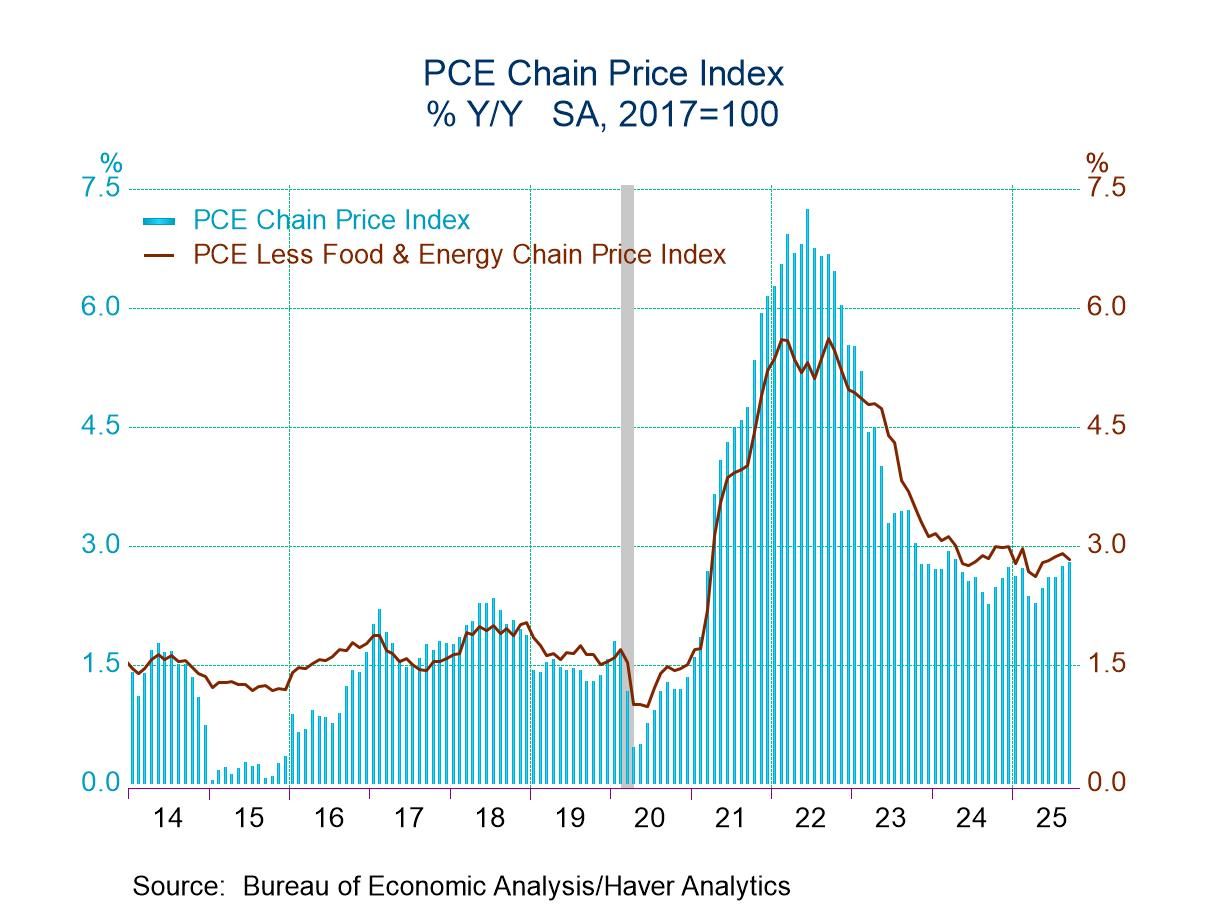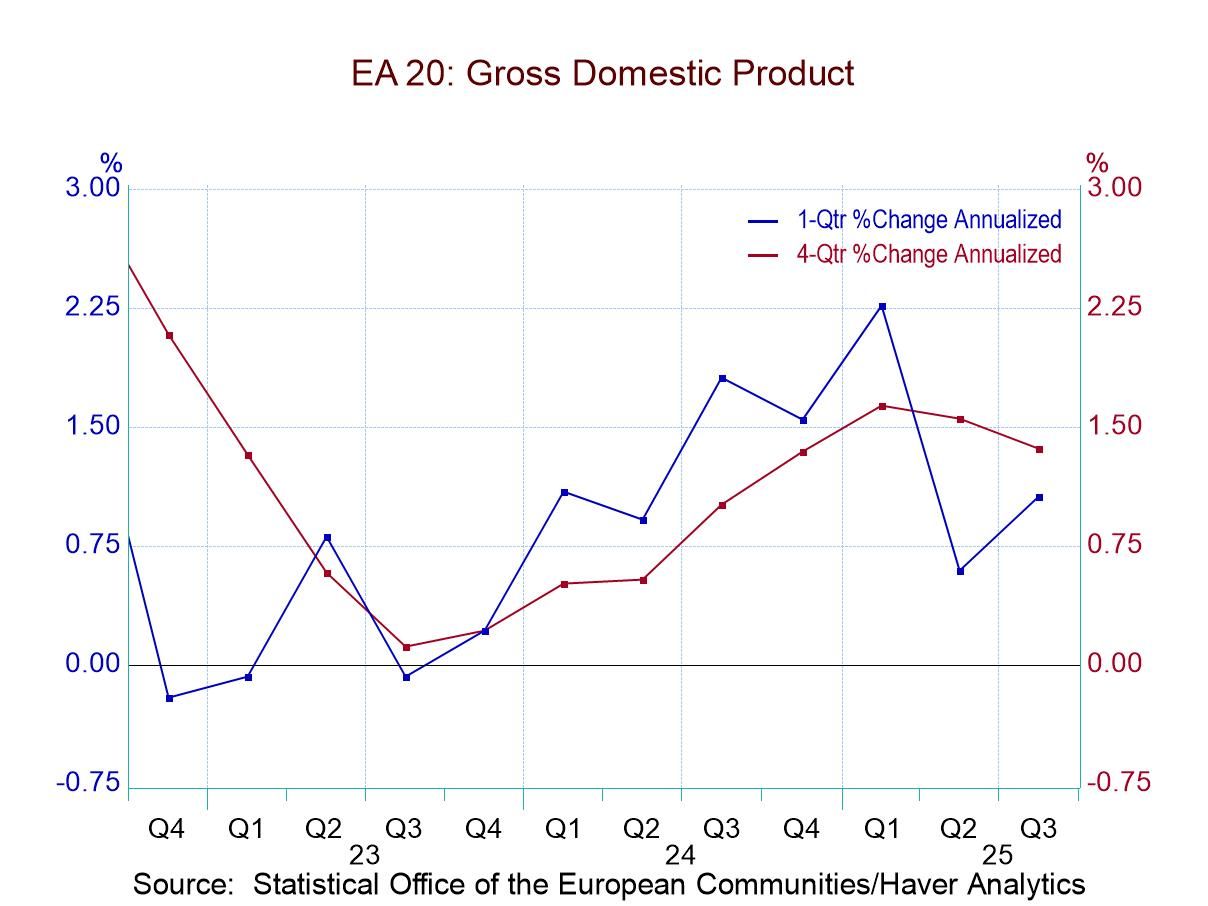U.S. Employment Cost Index Slows Modestly in Q2
Summary
- Compensation growth for all workers slows in Q2.
- Wages grew 1.0% q/q and benefits grew 0.9% q/q in Q2.
- Compensation in goods-producing industries was weaker than in service-providing industries.


The employment cost index (ECI) for civilian workers rose 1.0% seasonally adjusted in Q2 2023, following a 1.2% increase in Q1 2023, according to Bureau of Labor Statistics data. The Action Economics Forecast Survey expected a 1.1% rise for Q2. Compared to a year ago, the overall ECI advanced 4.5% in Q2 after 4.8% in Q1, not seasonally adjusted. Since mid-2021, the ECI has held to a tight range of 1.1% to 1.4% each quarter.
The wages and salaries component for all civilian workers increased 1.0% seasonally adjusted in Q2. The benefits component slowed to a rise of 0.9% in Q2. Wages and salaries had risen at a 1.2% pace in Q1, while benefits were up 1.2%. Year-on-year, wages and salaries rose 4.6% in Q2, following a 5.0% rise in Q1, not seasonally adjusted, and benefits rose 4.2%, after a 4.5% rise in Q1.
For private industry workers, total compensation also increased 1.0% in Q2, following a rise of 1.2% in Q1, seasonally adjusted, producing a 4.5% increase from a year ago, not seasonally adjusted. Wages and salaries for private sector workers rose 1.0% in Q2, after a rise of 1.2% in Q1, seasonally adjusted; The year-over-year rise in wages and salaries was 4.6% in Q2, down from 5.1% in Q1, not seasonally adjusted. Benefits rose 0.9% in Q2, down slightly from the 1.1% rise in Q1, seasonally adjusted, and 3.9% from Q2 2022 not seasonally adjusted.
By industrial sector, total compensation in goods-producing industries increased 0.8% in Q2 after a rise of 1.2% in Q1, seasonally adjusted, and was up 4.0% from Q2 2022 not seasonally adjusted. In service-providing industries, total compensation increased 1.0% in Q2, following a 1.1% rise in Q1 and was up 4.6% over Q2 2022.
The employment cost index measures the change in the cost of labor, free from the influence of employment shifts, across occupations and industries. It is provided by the Bureau of Labor Statistics and is available in Haver’s USECON database. Consensus estimates from the Action Economics survey are in Haver’s AS1REPNA database.


Kathleen Stephansen, CBE
AuthorMore in Author Profile »Kathleen Stephansen is a Senior Economist for Haver Analytics and an Independent Trustee for the EQAT/VIP/1290 Trust Funds, encompassing the US mutual funds sponsored by the Equitable Life Insurance Company. She is a former Chief Economist of Huawei Technologies USA, Senior Economic Advisor to the Boston Consulting Group, Chief Economist of the American International Group (AIG) and AIG Asset Management’s Senior Strategist and Global Head of Sovereign Research. Prior to joining AIG in 2010, Kathleen held various positions as Chief Economist or Head of Global Research at Aladdin Capital Holdings, Credit Suisse and Donaldson, Lufkin and Jenrette Securities Corporation.
Kathleen serves on the boards of the Global Interdependence Center (GIC), as Vice-Chair of the GIC College of Central Bankers, is the Treasurer for Economists for Peace and Security (EPS) and is a former board member of the National Association of Business Economics (NABE). She is a member of Chatham House and the Economic Club of New York. She holds an undergraduate degree in economics from the Universite Catholique de Louvain and graduate degrees in economics from the University of New Hampshire (MA) and the London School of Economics (PhD abd).






 Global
Global